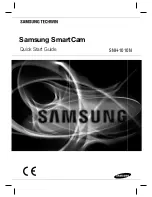
L
LCD Liquid Crystal Display
An alphanumeric display using the unique properties of liquid crystal to form characters. The latest flat-panel
displays comprise a matrix of hundreds or thousands of individual LCD cells that generate text and colorful
graphics on a screen. They consume little power though they do require external lighting to make them
legible to the user.
RETURN TO TOP OF THE PAGE
U
USB or Universal Serial Bus
A smart plug for PC peripherals.
USB automatically determines resources (like driver software and bus
bandwidth) required by peripherals. USB makes necessary resources available without user intervention.
USB eliminates "case angst" -- the fear of removing the computer case to install add-on peripherals.
And USB also eliminates adjustment of complicated IRQ settings when installing new peripherals.
●
USB does away with "port gridlock." Without USB, PCs are normally limited to one printer, two Com
port devices (usually a mouse and modem), one Enhanced Parallel Port add-on (scanner or video
camera, for example) and a joystick. More and more peripherals for multimedia computers arrive on
the market every day. With USB, up to 127 devices can run simultaneously on a computer.
●
USB permits "hot plug-in." There's no need to shut down, plug in, reboot and run set-up to install
peripherals. And no need to go through the reverse process to unplug a device.
●
In short, USB transforms today's "Plug-and-Pray" into true Plug-and-Play!
Hub
A Universal Serial Bus device that provides additional connections to the Universal Serial Bus.
Hubs are a key element in the plug-and-play architecture of USB. The Figure shows a typical hub. Hubs
serve to simplify USB connectivity from the user's perspective and provide robustness at low cost and
complexity.
Hubs are wiring concentrators and enable the multiple attachment characteristics of USB. Attachment points
are referred to as ports. Each hub converts a single attachment point into multiple attachment points. The
architecture supports concatenation of multiple hubs.
The upstream port of a hub connects the hub towards the host. Each of the other downstream ports of a hub
allows connection to another hub or function. Hubs can detect, attach and detach at each downstream port
and enable the distribution of power to downstream devices. Each downstream port can be individually
enabled and configured at either full or low speed. The hub isolates low speed ports from full speed
signaling.
A hub consists of two portions: the Hub Controller and Hub Repeater. The repeater is a protocol-controlled
switch between the upstream port and downstream ports. It also has hardware support for reset and
suspend/resume signaling. The controller provides the interface registers to allow communication to/from the
host. Hub specific status and control commands permit the host to configure a hub and to monitor and control
Glossary
file:///E|/Potomac/english/150x/glossary/glossary.htm (3 of 5) [8/9/2000 12:39:25 PM]
Содержание 150X1H
Страница 1: ...Philips 150X Electronic User s Manual file E Potomac english 150x index htm 8 9 2000 12 35 09 PM ...
Страница 15: ...150X Product Information file E Potomac english 150x product product htm 9 of 9 8 9 2000 12 39 23 PM ...
Страница 23: ...On Screen Display file E Potomac english 150x osd osddesc htm 3 of 5 8 9 2000 12 39 24 PM ...
Страница 24: ...Digital signal input On Screen Display file E Potomac english 150x osd osddesc htm 4 of 5 8 9 2000 12 39 24 PM ...
Страница 82: ...The OSD Controls file E Potomac english 150x osd osd_cont htm 18 of 18 8 9 2000 12 48 50 PM ...
















































